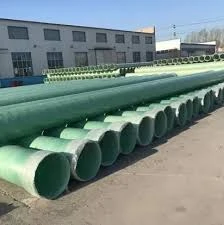
-
 Afrikaans
Afrikaans -
 Albanian
Albanian -
 Amharic
Amharic -
 Arabic
Arabic -
 Armenian
Armenian -
 Azerbaijani
Azerbaijani -
 Basque
Basque -
 Belarusian
Belarusian -
 Bengali
Bengali -
 Bosnian
Bosnian -
 Bulgarian
Bulgarian -
 Catalan
Catalan -
 Cebuano
Cebuano -
 China
China -
 China (Taiwan)
China (Taiwan) -
 Corsican
Corsican -
 Croatian
Croatian -
 Czech
Czech -
 Danish
Danish -
 Dutch
Dutch -
 English
English -
 Esperanto
Esperanto -
 Estonian
Estonian -
 Finnish
Finnish -
 French
French -
 Frisian
Frisian -
 Galician
Galician -
 Georgian
Georgian -
 German
German -
 Greek
Greek -
 Gujarati
Gujarati -
 Haitian Creole
Haitian Creole -
 hausa
hausa -
 hawaiian
hawaiian -
 Hebrew
Hebrew -
 Hindi
Hindi -
 Miao
Miao -
 Hungarian
Hungarian -
 Icelandic
Icelandic -
 igbo
igbo -
 Indonesian
Indonesian -
 irish
irish -
 Italian
Italian -
 Japanese
Japanese -
 Javanese
Javanese -
 Kannada
Kannada -
 kazakh
kazakh -
 Khmer
Khmer -
 Rwandese
Rwandese -
 Korean
Korean -
 Kurdish
Kurdish -
 Kyrgyz
Kyrgyz -
 Lao
Lao -
 Latin
Latin -
 Latvian
Latvian -
 Lithuanian
Lithuanian -
 Luxembourgish
Luxembourgish -
 Macedonian
Macedonian -
 Malgashi
Malgashi -
 Malay
Malay -
 Malayalam
Malayalam -
 Maltese
Maltese -
 Maori
Maori -
 Marathi
Marathi -
 Mongolian
Mongolian -
 Myanmar
Myanmar -
 Nepali
Nepali -
 Norwegian
Norwegian -
 Norwegian
Norwegian -
 Occitan
Occitan -
 Pashto
Pashto -
 Persian
Persian -
 Polish
Polish -
 Portuguese
Portuguese -
 Punjabi
Punjabi -
 Romanian
Romanian -
 Russian
Russian -
 Samoan
Samoan -
 Scottish Gaelic
Scottish Gaelic -
 Serbian
Serbian -
 Sesotho
Sesotho -
 Shona
Shona -
 Sindhi
Sindhi -
 Sinhala
Sinhala -
 Slovak
Slovak -
 Slovenian
Slovenian -
 Somali
Somali -
 Spanish
Spanish -
 Sundanese
Sundanese -
 Swahili
Swahili -
 Swedish
Swedish -
 Tagalog
Tagalog -
 Tajik
Tajik -
 Tamil
Tamil -
 Tatar
Tatar -
 Telugu
Telugu -
 Thai
Thai -
 Turkish
Turkish -
 Turkmen
Turkmen -
 Ukrainian
Ukrainian -
 Urdu
Urdu -
 Uighur
Uighur -
 Uzbek
Uzbek -
 Vietnamese
Vietnamese -
 Welsh
Welsh -
 Bantu
Bantu -
 Yiddish
Yiddish -
 Yoruba
Yoruba -
 Zulu
Zulu
Drilling Rods Twisting Deep Beneath the Earth's Surface for Exploration and Resource Extraction
Drilling Rod Spirals Down Into the Earth
The process of drilling into the Earth is a fascinating exploration of our planet's hidden depths. At the heart of this endeavor is the drilling rod, a crucial component that not only facilitates the descent into the Earth’s crust but also uncovers the secrets buried beneath layers of soil, rock, and mineral deposits. As the drilling rod spirals down into the Earth, it transforms mere curiosity into actionable knowledge.
Drilling technology has advanced significantly over the decades, enabling engineers and geologists to reach unprecedented depths. The drilling rod, often made of durable steel, is designed to withstand immense pressure and friction as it penetrates various geological formations. Attached to the rod is a drill bit, which is specifically tailored to effectively cut through the type of material being encountered, whether it’s soft sediment or hard rock.
As the drilling rod spirals down, the process begins with careful planning and analysis. Before the first turn of the drill, extensive geological surveys are conducted to understand the composition of the Earth's crust in the targeted area. This information is crucial for determining the appropriate drilling technique and ensuring that the rod can navigate through different strata without difficulty. The endeavor is not just about reaching a predetermined depth; it’s about maintaining accuracy and minimizing environmental disruption.
drilling rod spirals down into the earth.

With the initial setup complete, the drilling operation commences. The rod typically rotates in a clockwise motion, and as it spirals downwards, it creates a borehole. This hole serves multiple purposes—it allows for the extraction of core samples, which reveal invaluable information about the Earth's geology, and can also be used to access natural resources, such as oil and gas. Each segment of the drilling rod is connected to the next, and as more of the rod is added, it continues its graceful descent into the depths below.
Throughout this process, monitoring is key. Sensors are integrated to track progress, temperature, and pressure, providing real-time data to the operators. This information helps in making instant adjustments to the drilling parameters, ensuring efficiency and safety.
In conclusion, the journey of a drilling rod spiraling down into the Earth is not simply a mechanical task; it is a blend of science, engineering, and exploration. Each revolution of the rod uncovers layers of history and potential resources, deepening our understanding of the planet we inhabit. As we continue to refine this technology, the mysteries hidden below the surface remain an ever-present invitation for discovery.









